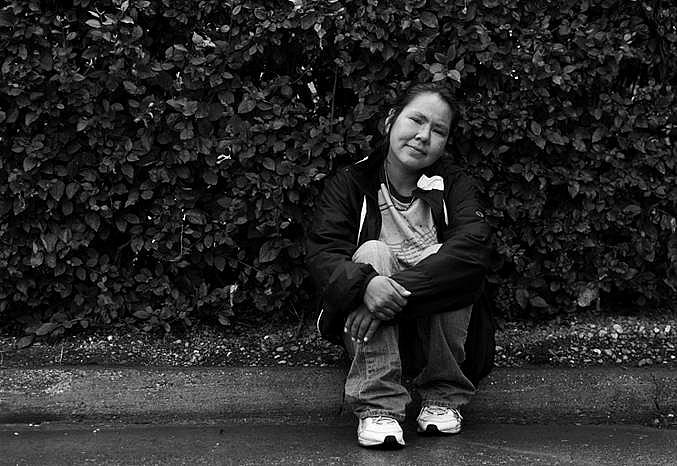'I want to die in my sleep as an old woman'

Marc Lester photo
Jodi Mahle, who lives on the streets of Anchorage, Alaska, woke up one afternoon in November to find her boyfriend dead beside her. Other homeless watched as she pressed on his chest, she said, frantic to jumpstart his pulse outside a Midtown liquor store.
The next day Mahle’s cousin died too, shaking from alcohol withdrawal at the city sleep-off center.
Those homeless deaths became news briefs. Others are front page headlines in Alaska, but reported in a few hours with a trip to the city shelter.
With this project, photojournalist Marc Lester and I hope to better explore the lives and deaths of Alaska homeless. We suspect that drinking and sleeping outside in the subarctic claims more lives than Alaskans realize, with public inebriate deaths outpacing other cold weather cities and states.
In Anchorage, the state’s largest city, neighborhoods and public policy makers are hungry for solutions following a series of high-profile outdoor deaths beginning in 2009.
Some Alaska communities, like Nome, have already made high-energy effort to find people who have passed out in the cold. Others are searching for ways to fund affordable housing. In Anchorage, fed-up neighborhood leaders have proposed outlawing alcohol sales to the problem drinkers.
After a year of reporting on the impact and legacy of alcohol abuse in Alaska, Marc and I hope to produce a series that humanizes the homeless here but is clear-eyed about the cost and scope of our public inebriate problem.
Among our goals:
-- Introduce Alaskans to the lives of Anchorage homeless – some of whom arrive from remote villages and may not be able to afford travel home. We want to make no assumptions about who is living and dying outdoors.
-- Use video and audio to tell the stories in ways that we haven’t focused on before, allowing the audience to see the faces and hear the voices of the people in our series.
-- Examine ideas for best-practices solutions to reduce homelessness and shrink the burden on taxpayers. Readers tell us they appreciate stories that offer answers, not just problems.
This topic is well worn in many newsrooms. What editor hasn’t considered searching out his or her city’s own Million-Dollar Murray? Here in the subarctic and arctic, however, the stakes are higher. In Barrow we met a man who lives in an abandoned house, burning palettes to stay warm through more than 60 days of darkness. In Bethel, activists recently opened a makeshift shelter following three exposure deaths. Fairbanks and Anchorage are experimenting with their first “housing-first” programs, yet bodies are still being found in cars and hidden campsites.
We stopped to talk to Jodi at the corner of 36th Avenue and C Street in Anchorage. She was holding a sign that said “God Bless” and talked about getting treatment. At 34, she dreams of becoming a nurse.
She doesn't want to die outdoors, she said.
Read more about our project on Marc's blog.

